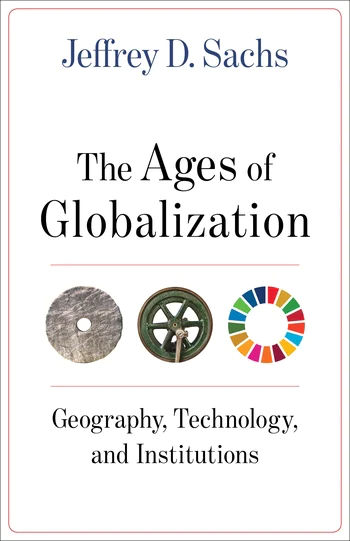By Willie Baptist, Charon Hribar, and John Wessel-McCoy
This is part five of a six-part series published by The Journal of the University of the Poor. Read Part 4.
The many uses of symbols, the arts, and other cultural forms have become more prominent, penetrating, and powerful weapons of struggle in this new era of netwar. They have become indispensable components of political strategy. Cultural, religious, and patriotic symbols, songs, and slogans continue even more so to play a major role of either maintaining or defeating the critical ideological fortresses on the mental terrain of the masses of people. Political leaders, teachers, and organizers disregard this factor at their peril.
Philadelphia, Pennsylvania is a city of major importance in US history and traditions. It is one of the homes of the origins of the basic symbols of the American Personality. For instance, the Liberty Bell wasn’t called the “Liberty Bell” until the abolitionist movement took it up. On the bell is inscribed a passage from the Old Testament book of Leviticus 25:10: “Proclaim Liberty throughout all the land unto all the inhabitants thereof.” The Liberty Bell is closely associated with the founding creed of the United States. The Declaration of Independence’s proclamation of the God-given rights to “life, liberty, and the pursuit of happiness” rings throughout the different stages of US history. The struggle over its meaning has been fought out in each of these stages, including the formulation and different interpretations of the United Nations’ Universal Declaration of Human Rights. Social movements in the US — the American Revolution against the British Empire, the Civil War, the struggles for women’s suffrage, trade union rights, and civil rights — have been instances where leaders fought to expand the notion of rights and of who has access to “life, liberty, and the pursuit of happiness.”
Napoleon has been credited as the source of the saying, “A picture is worth a thousand words.” Certainly, history has noted major period of times when the power of images — as expressed especially in icons, rituals, and symbols — has overtaken the weapon of words. The major ideological role arts and culture has played in the creative conjuring up and manipulation of images to convey messages and to conduct mass education cannot be denied. The language of images penetrates the borders of all national languages. For this reason, the warning of the historical novelist Umberto Eco must be heard: “A democratic civilization will save itself only if it makes the language of the image into a stimulus for critical reflection—not an invitation for hypnosis.”1
The apostles and disciples of the early Christian movement play indispensable roles as leaders and teachers of a Gospel of justice, of bringing good news to the poor. This placed this movement and these leaders in a dangerous position of opposing the constant bad news being perpetrated on the poor by the exploitative and oppressive Roman Empire. The bad economic and political news found expression in the prevailing religious doctrines of the empire. This historic and biblical confrontation represented a profound clash of theologies. The Ministry of Jesus of Nazareth and his devoted disciples essentially called for “a revolution of values”, challenging the mental fortresses and terrain that supported the military dictatorship of the ancient economic slavery-based Roman society.
Their use of signs, symbols, parables, and other cultural forms made their messages and ministries more relevant and penetrating. Consequently, they functioned as educators and organizers of churches and a social movement for the just Kingdom of God and against the unjust Slave Empire of Caesar. This freedom Gospel (expressed politically in the meaning of the crucifixion of Jesus Christ) was symbolized in their use of replicas of Roman crosses, which in those days were often placed alongside Roman roads as political advertisement of the power and terrorizing devices of the Roman Empire. The Roman road system (the ancient “internet”), while serving to facilitate the strategic movements of the Roman Army, commerce, and the Roman postal system, was also utilized as lines of communication for the counter movement of the messages of the early Christian movement, symbolized by their subversive use of the Roman cross. This counter strategy was promoted and carried out through the itinerant ministries of the disciples and apostles, and particularly through Paul’s travels and epistles.
Clearly, arts and culture have been major means and venues for the construction and maintenance of the dominant narratives of society. All songs, movies, and other cultural forms and artistic productions put out a particular ideology, and overall the role of arts and culture is to construct a narrative that supports that ideology. Often, arts and culture operate on an unconscious level, getting into our minds without us being conscious of it. We need to be conscious of what is being used to promote dominant views, and how arts and culture is appealing to and reinforcing the existing mental fortresses of the poverty-producing economy system. This means we have to be strategically clear as to how we use arts and culture.
Arts and culture can be used to make people feel a sense of connectedness and allow people to absorb meaning in ways more penetrating and longer lasting than words. It can also help embody a message in a different way. For example, the Border Network for Human Rights in Texas and New Mexico often uses the American flag and the Virgin of Guadalupe as symbols of their resistance. This is an example of redefining what is America, who is American, and the rights associated with Americaness. In order to move hearts and minds, we also need to know the artistic and cultural impulses and developments already arising in response to the objective necessities or conditions of mass struggles. Effective tactics and campaigns must creatively incorporate the proper approaches to the use of arts and cultural forms, particularly in the new era of network organization and netwar.
In the final part of this series, we turn our attention to the political and educational role of campaigns. In particular, we look at the significance of Rev. Dr. Martin Luther King Jr’s Poor People’s Campaign of 1968 as part of a strategy capable of taking on the ruling class’s prevailing and protective conceptions of Reality, Rugged Individualism, Religion, Race, Rights, and Redbaiting through the potentially powerful role of the poor and dispossessed becoming “a new and unsettling force.” This vision in 1968 has an even more strategic and mass import today, as the plight of the poor worsens, and their fights grow and are united nationally and globally.
1 ― Umberto Eco, The Screen Education Reader: Cinema, Television, Culture


I would like to respond to the following assertion in the article: “All songs, movies, and other cultural forms and artistic productions put out a particular ideology, and overall the role of arts and culture is to construct a narrative that supports that ideology.” While I agree with the sentiment, I think that this over simplifies the role and effect of arts and cultural works. I believe that there are didactically opposed aspects or forces at play with works of art; on the one hand there is the honest expression of a re-creation of reality and a communication that can be unique and uplifting/ eye-opening, can touch both the heart and mind, and this can help us see strength and beauty in the exterior world, perhaps in new and unexpected ways. On the other hand there is the aspect of art that is part of and tied to the society in which the artist lives, in our modern world the poisonous soup of advanced capitalism. This aspect panders to and reinforces, as the article states, the enslaving ideology of the ruling class and the deadly system of commercialism that is our dominant culture. As revolutionaries it is our job to struggle to produce art and culture that both thrills/ uplifts those participating in its existence, as well as consciously sheds off the toxins of our dominant capitalist culture. I welcome more on this important discussion. In solidarity…
I love this exploration of the role of Arts, Culture & Religions in maintaining or challenging hegemony and creating a new common sense. We often think about Wall Street, the CFR, and Washington, DC as seats of power for the ruling class. But thinking about Hollywood and Disney World and other hubs in the hegemonic propaganda machine as seats of power is just as critical. Also seeing just how “progressive” some of these places can be — how much of “our language” or “our inclusiveness” can be integrated into basic economic and political structures is fascinating. I’d love a further exploration of the power rooted in the transformation (rather than rejection) of even more old symbols that exist deep within our collective (un)consciousness.
I’m thankful but not so sure about “the role of art” introduced in this important but way too-short UP Journal article. The “use” or “message” of art and whether something “is indeed” art seems somehow tied to the positions of its creator and audience, doesn’t it? Whether that be from a class-analysis position—possibly owner or producer, or collector or interpreter, or contemporary viewer/listener/spectator or archeologist, etc. Didn’t art become a valued commodity long before the birth of ‘poisonous soup’ capitalism? I’m guessing that its didactic social aspect was not lost on the first dancers and musicians and cave artists…who are still teaching us (nincompoops?) today. If I understand them correctly, I totally agree with Amy and Peter that further exploration of what contemporary art/culture communicates– especially if it’s put within a global and historic framework– could be politically valuable for all of us.